TOPAS Prime Automated Optical Parametric Amplifiers
Overview
The TOPAS Prime optical parametric amplifier (OPA) is a state-of-the-art instrument for Ti:Sapphire amplifier system wavelength extension. Wavelengths can be generated from the deep UV through the infrared (189–20000 nm) range. The TOPAS Prime is computer controlled which minimizes adjustment time of the laser system and maximizes experimental productivity. TOPAS Prime is the ideal instrument for your scientific application.
- Hands-free operation
- Excellent beam quality
- Up to 5 mJ input energy
- High conversion efficiency
Products
Specifications
TOPAS Prime Input Requirements1
| TOPAS Prime-U | TOPAS Prime-F | |
|---|---|---|
| Input Wavelength | 770-830 nm | |
| Pulse Energy2, 3 | 0.15-6.0 mJ | |
| Pulse Width, FWHM4 | 20-60 fs | 60-150 fs |
| Polarization | Horizontal | |
| Energy Stability | ≤1% rms | |
| Pulse-to-Pulse Stability | ≤1% | |
| Beam Divergence | <1.5 x (diffraction limit) | |
| Beam Height | 120-185 mm from optical table | |
| Beam Diameter (1/e²) | <11 mm | |
TOPAS Prime Output Requirements1
| Tuning Range | TOPAS Prime-F Output Energy 100 fs |
TOPAS Prime-U Output Energy 35 fs |
Polarization |
|---|---|---|---|
| Signal: 1140-1600 nm | >250 µJ (signal + idler at peak) | >250 µJ (signal + idler at peak) | Vertical |
| Idler: 1600-2600 nm | Horizontal | ||
| SHS: 580-800 nm | >80 µJ | >30 µJ | Horizontal |
| SHI: 800-1160 nm | >50 µJ | >20 µJ | Vertical |
| SFI: 533-600 nm | >50 µJ6 | >30 µJ | Vertical |
| SFS: 475-533 nm | >70 µJ6 | >40 µJ | Vertical |
| FHS: 290-400 nm | >15 µJ | >5 µJ | Horizontal |
| FHI: 400-480 nm | >15 µJ | >4 µJ | Horizontal |
| SH of SFS: 240-266 nm | >7 µJ | >3 µJ | Horizontal |
| SH of SFI: 266-295 nm | >7 µJ | >3 µJ | Horizontal |
| Deep UV - FHS + Pump: 215-240 nm | >3 µJ | >1 µJ | Vertical |
| Deep UV - SH of SFI + Pump: 200-215 nm | >3 µJ | >1 µJ | Vertical |
| Deep UV - SH of SFS + Pump: 190-200 nm |
>3 µJ | >1 µJ | Vertical |
| NDFG1K: 2600-4500 nm (100 fs)5 | >8 µJ at 4000 nm; | Horizontal | |
| NDFG2K: 4000-18000 nm (100 fs)5 | >4 µJ at 5000 nm; >0.3 µJ at 15000 nm |
Horizontal | |
| NDFG1K: 2600-4500 nm (35 fs)5 | >2 µJ at 4000 nm | Horizontal | |
| NDFG2K: 4000-15000 nm (35 fs)5 | >1 µJ at 5000 nm; >0.1 µJ at 13000 nm |
Horizontal |
Footnotes:
- Due to our continuous product improvement program, specifications are subject to change without notice.
- TOPAS Prime energies scaled linearly with input energy. Energy above generated at 1 mJ input energy.
- 6 mJ input energy requires TOPAS Prime Plus configuration.
- For pulse widths >150 fs, contact Spectra-Physics.
- Collinear DFG available upon request.
- Optional fresh pump available.
Features
Improved Optical Design
TOPAS Prime utilizes several key features to maximize utility and efficiency. In the visible range, the fresh pump option provides improved beam quality for more efficient sum-frequency conversion. The improved optical design accommodates a larger beam diameter, (~11 mm) which eliminates the need for an external telescope. When higher energy output is needed, the TOPAS Prime Plus can accept input energies up to 6 mJ.
Pump with Solstice Ace and Spitfire Ace Regenerative Amplifiers
The TOPAS Prime works best when pumped using the market leading Solstice Ace and Spitfire Ace regenerative amplifiers. Both amplifiers are equipped with the Spectra-Physics patented Ace regenerative amplifier cavity. This cavity utilizes a normal incidence rod design for an outstanding beam quality with minimal astigmatism. In addition, the Solstice Ace and Spitfire Ace provide market leading stability specifications making TOPAS Prime the perfect tool for performing ultrafast research.
Compatible Power Sensors
To verify and analyze the output power of your Topas Prime laser, we recommend the Ophir 30A-BB-18 (7Z02692) thermal power sensor and Centauri laser power meter. Additional information on this laser measurement equipment can be found on the ophiropt.com website. Other Ophir sensors and meters may also be suitable for the Topas Prime, depending on application. Ophir also works with laser system developers to achieve embedded beam diagnostics to monitor system performance as an OEM solution.
Resources
Data Sheets
- TOPAS Prime Datasheet (576.7 kB, PDF)
Drawings & CAD
- TOPAS Prime Dimensions (261.8 kB, PDF)
Application Notes
- Multimodal Ultrafast Spectroscopy System (2.9 MB, PDF)
Literature
- Ultrafast Lasers Brochure (4.6 MB, PDF)
Pre-installation Guides
- Ultrafast Amplifiers Pre-installation Guide (103.5 kB, PDF)

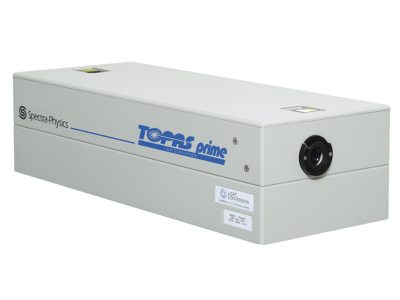
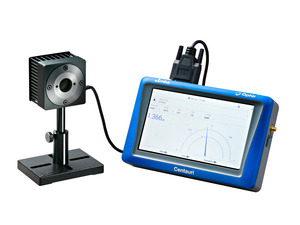
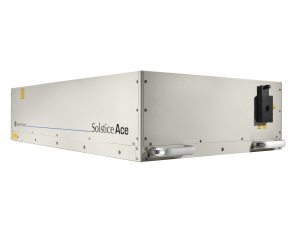
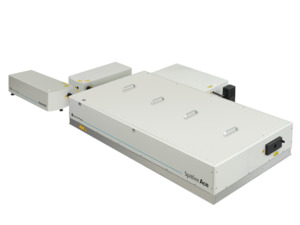
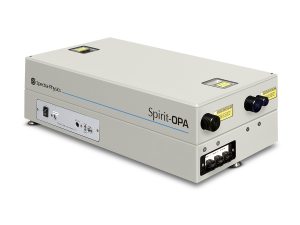
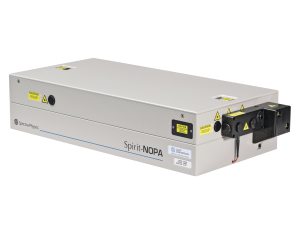
 Ultra-High Velocity
Ultra-High Velocity